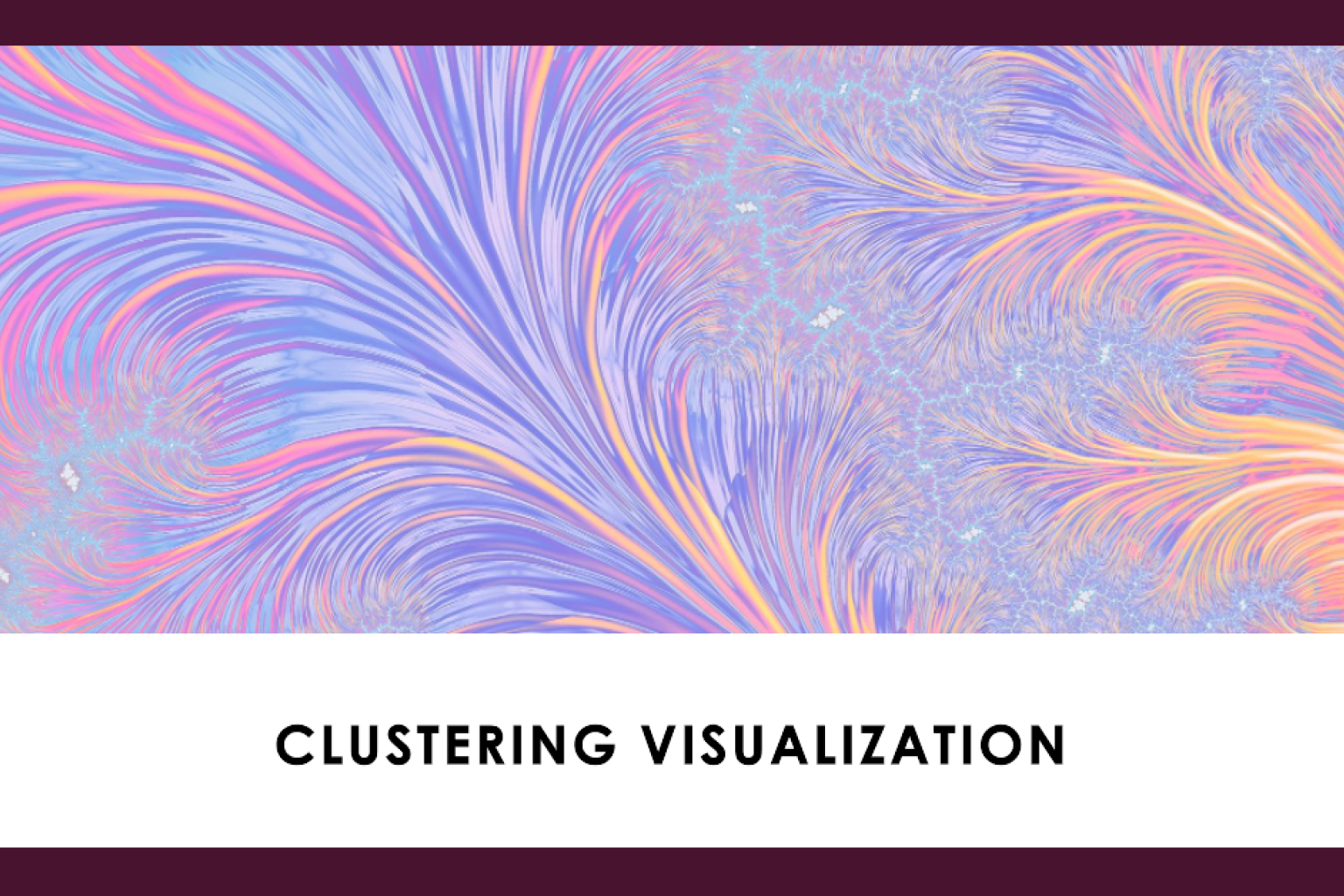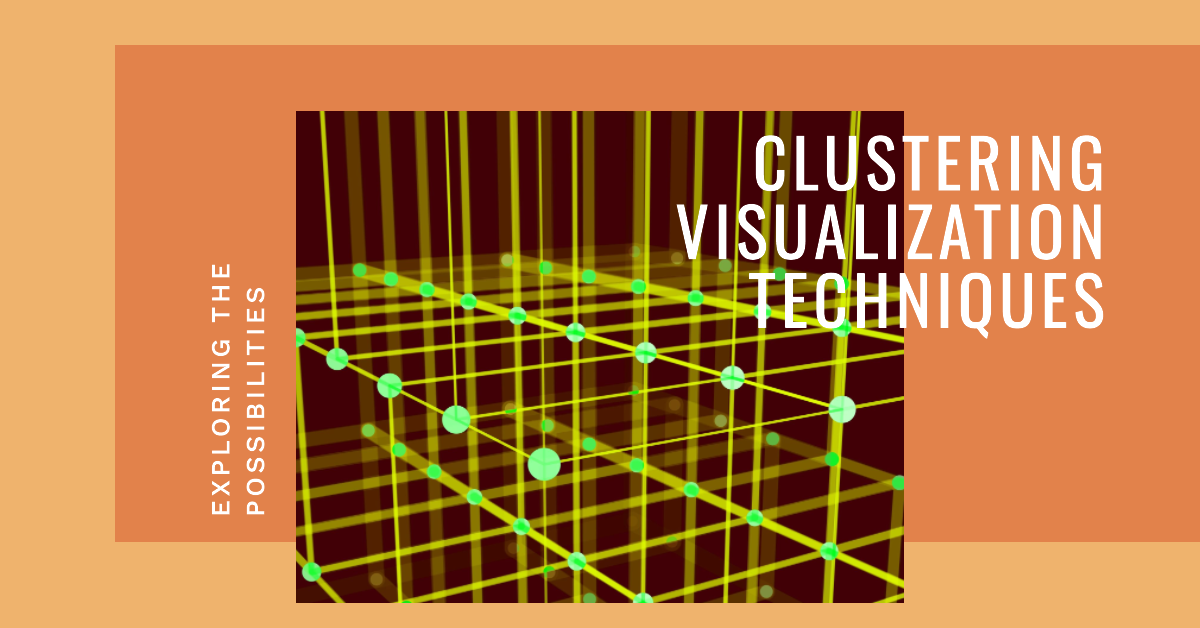Clustering Visualization: The Ultimate Guide to Get Started
Updated on

In the realm of data science and machine learning, clustering visualization is a powerful tool that allows us to understand complex datasets in a more intuitive and accessible way. This guide aims to provide a comprehensive overview of clustering visualization, its benefits, applications, and best practices.
Clustering visualization is a technique used in unsupervised learning to group similar data points together. It's a crucial aspect of exploratory data analysis, helping data scientists to identify patterns and structures within unlabelled data. By visualizing these clusters, we can gain valuable insights that might not be immediately apparent from the raw data alone.
What is Clustering Visualization?
Clustering visualization is a method used to represent the groups or clusters formed by clustering algorithms in a visual format. This technique is widely used in data analysis and machine learning, particularly in unsupervised learning where the goal is to discover hidden patterns or structures in unlabelled data.
There are several clustering algorithms available, each with its unique way of grouping data. Some of the most popular ones include K-means, Hierarchical Clustering, DBSCAN, and PaCMAP. These algorithms can handle multidimensional data, making them suitable for complex datasets.
Visualizing these clusters can help us understand the data better. For instance, we can identify which data points are similar to each other, how they are grouped, and how these groups are different from each other. This information can be invaluable in many applications, such as document analysis, spam filtering, and detecting fraudulent activity.
Benefits of Using Clustering Visualization
Clustering visualization offers several benefits. First, it makes complex data more understandable. By representing data in a visual format, we can comprehend the data's structure and patterns more easily. This is particularly useful when dealing with multidimensional data, where visualizing the data can simplify the complexity.
Second, clustering visualization can aid in decision-making. In fields like marketing and sales, understanding customer behavior is crucial. Clustering visualization can reveal patterns in customer data, helping businesses to tailor their strategies accordingly.
Lastly, clustering visualization can help detect anomalies. In data security, for instance, clustering can reveal unusual patterns that might indicate fraudulent activity. By visualizing these clusters, security analysts can identify potential threats more quickly.
Common Applications of Clustering Visualization
Clustering visualization has a wide range of applications. In document analysis, for example, clustering can group similar documents together, making it easier to manage and retrieve information. Visualizing these clusters can further enhance our understanding of the document corpus.
In marketing and sales, clustering visualization can help understand customer behavior. By grouping customers based on their purchasing patterns, businesses can tailor their marketing strategies to target specific customer groups effectively.
Clustering visualization is also used in spam filtering. By clustering emails based on their content, spam filters can identify and block spam emails more effectively. Visualizing these clusters can help improve the spam filter's performance by identifying features that distinguish spam emails from legitimate ones.
Clustering Visualization Techniques and Tools

There are several techniques for visualizing clustering results. The choice of technique depends on the nature of the data and the specific requirements of the task at hand. Some common techniques include scatter plots, dendrograms, and heatmaps.
Scatter plots are commonly used to visualize clusters in two
or three-dimensional data. Dendrograms are used for hierarchical clustering, showing the hierarchical relationship between clusters. Heatmaps, on the other hand, are useful for visualizing high-dimensional data, with colors representing different values in the dataset.
There are also several tools available for clustering visualization. Python, for instance, offers libraries like Matplotlib and Seaborn that provide various functions for data visualization. These libraries can be used to create scatter plots, dendrograms, heatmaps, and more.
In Python's Matplotlib, for example, we can use the scatter function to create a scatter plot of our data. Each point in the plot represents a data point, and the color of the point indicates its cluster. This can be a powerful way to visualize the results of our clustering algorithm.
import matplotlib.pyplot as plt
# assuming 'data' is our multidimensional data and 'labels' is the array of cluster labels
plt.scatter(data[:, 0], data[:, 1], c=labels)
plt.show()This simple piece of code can provide a clear and intuitive visualization of our clusters, helping us understand the structure of our data better.
In addition to scatter plots, other visualization techniques such as the elbow-plot method and silhouette analysis can be used to determine the optimal number of clusters. These methods provide a visual way to assess the quality of our clustering, which can be crucial for ensuring the accuracy of our analysis.
from sklearn.cluster import KMeans
from sklearn.metrics import silhouette_score
import matplotlib.pyplot as plt
# assuming 'data' is our multidimensional data
scores = []
for k in range(2, 10):
kmeans = KMeans(n_clusters=k).fit(data)
score = silhouette_score(data, kmeans.labels_)
scores.append(score)
plt.plot(range(2, 10), scores)
plt.title('Silhouette Score Method')
plt.xlabel('Number of clusters')
plt.ylabel('Silhouette Score')
plt.show()This code plots the silhouette score for different numbers of clusters, helping us choose the number that maximizes the score.
Popular Clustering Algorithms Used for Visualization
There are several clustering algorithms that are commonly used for visualization. Each of these algorithms has its strengths and weaknesses, and the choice of algorithm depends on the specific requirements of your task.
K-means
K-means is a simple and efficient algorithm that partitions the data into K distinct clusters based on distance to the centroid of the clusters. The algorithm iteratively assigns each data point to the nearest centroid and recalculates the centroids until the clusters are stable. However, K-means assumes that clusters are spherical and equally sized, which might not always be the case in real-world data.
Hierarchical Clustering
Hierarchical clustering creates a tree of clusters, which can be visualized using a dendrogram. This algorithm can be either agglomerative (bottom-up) or divisive (top-down). Agglomerative clustering starts with each data point as a separate cluster and merges the closest pairs of clusters until only one cluster (or K clusters) remain. Hierarchical clustering can capture complex cluster structures, but it can be slower than K-means for large datasets.
DBSCAN
DBSCAN (Density-Based Spatial Clustering of Applications with Noise) is a density-based clustering algorithm. It groups together data points that are close in the data space and have a minimum number of neighbors. DBSCAN can find arbitrarily shaped clusters and can identify noise (outliers). However, it may not perform well when clusters have different densities.
PaCMAP
PaCMAP (Pairwise Controlled Manifold Approximation Projection) is a relatively new algorithm for dimensionality reduction and visualization. It aims to preserve both the local and global structure of the data, making it suitable for visualizing complex, high-dimensional data. PaCMAP can be used as a preprocessing step for clustering, helping to reduce the dimensionality of the data while preserving its structure.
Enhance Your Clustering Visualization Process with RATH
Another way to automate your Clustering Visualization process is using RATH. There are several features available in RATH that could provide your assistance in clustering visualization:
Easy Plotting for Clustering Visualization
For users with a more traditional BI background, RATH has an easy-to-use, tableau-alternative feature called Manual Exploration. You can create highly customizable charts by dragging and dropping variables to shelves. Watch the following demo video about Exploring the seasonal relationships between registered users and casual users.
Interactive Data Insights for Clustering Visualization
Discovering the underlying patterns and trends from a complicated data source can be extremely challenging. The Data Painter feature is designed to fix this problem. You can easily clean data, model data, and explore data using a Painting Tool, which turns the complex Exploratory Data Analysis process visual and simple.
The following demo video shows the process of finding out the meaning of the trend within a certain data set:
For more details about RATH features, check out RATH website (opens in a new tab) for more
Best Practices for Visualizing Clustering Results
Visualizing clustering results can be a powerful tool for understanding your data, but it's important to follow some best practices to ensure that your visualizations are accurate and informative.
Choose the Right Visualization Technique
The choice of visualization technique depends on the nature of your data and the specific requirements of your task. For example, scatter plots are a good choice for visualizing clusters in two or three dimensions, while dendrograms are useful for showing the hierarchical relationship between clusters. Heatmaps can be useful for visualizing high-dimensional data, with colors representing different values in the dataset.
Interpret the Visualizations Correctly
Interpreting the visualizations correctly is crucial for understanding your clustering results. For example, in a scatter plot, data points that are close together belong to the same cluster, while data points that are far apart belong to different clusters. In a dendrogram, the height of the branches indicates the distance between clusters, with higher branches indicating larger distances.
Use Visualization to Improve Your Clustering
Visualization can also be used to improve your clustering. For example, if your scatter plot shows that some clusters are overlapping, you might need to adjust the parameters of your clustering algorithm or choose a different algorithm. Similarly, if your dendrogram shows that some clusters are too large or too small, you might need to adjust the number of clusters.
By following these best practices and understanding the underlying principles of clustering visualization, you can leverage this powerful tool to gain deeper insights into your data and make more informed decisions. Whether you're a data scientist, a machine learning engineer, or just someone interested in data analysis, mastering clustering visualization is a valuable skill that can help you in your work.
Conclusion
In conclusion, clustering visualization is a powerful tool in the field of data analysis and machine learning. It provides a way to visually represent the structure of data, making it easier to understand and interpret. By using appropriate clustering algorithms and following best practices for visualization, you can uncover hidden patterns and insights in your data, leading to more effective decision-making and strategy planning.
FAQs
What is Clustering Visualization?
Clustering visualization is a method used to represent the groups or clusters formed by clustering algorithms in a visual format. This technique is widely used in data analysis and machine learning, particularly in unsupervised learning where the goal is to discover hidden patterns or structures in unlabelled data.
What are the Benefits of Using Clustering Visualization?
Clustering visualization offers several benefits. It makes complex data more understandable, aids in decision-making, and can help detect anomalies. By representing data in a visual format, we can comprehend the data's structure and patterns more easily.
What are Some Common Applications of Clustering Visualization?
Clustering visualization has a wide range of applications. It can be used in document analysis, marketing and sales, and spam filtering, among other areas. By grouping similar data points together and visualizing these groups, we can gain valuable insights into our data.
